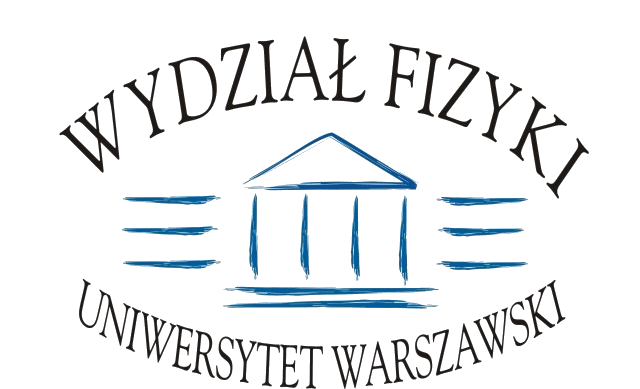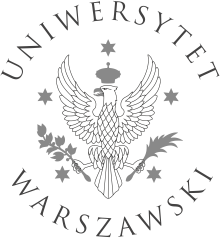Seminarium Teorii Oddziaływań Elementarnych
2006/2007 | 2007/2008 | 2008/2009 | 2009/2010 | 2010/2011 | 2011/2012 | 2012/2013 | 2013/2014 | 2014/2015 | 2015/2016 | 2016/2017
2015-03-23 (Poniedziałek)
Mateusz Iskrzyński (IFT UW)
Exact SU(5) Yukawa matrix unification in the General Flavour Violating MSSM
The simplest Grand Unified Theory (GUT) embedding the Standard Model (SM)is based on the SU(5) symmetry. The unification of gauge couplings,failing in the SM, takes place in the widely studied R-parity conservingMinimal Supersymmetric Standard Model (MSSM). The possibility ofsatisfying the minimal SU(5) boundary conditions also for Yukawa matricesat the GUT scale within the MSSM is investigated and a new region in theparameter space consistent with this requirement is identified. The equality of down-quark and lepton Yukawa matrices at the GUT scale canbe achieved with non-zero flavour off-diagonal entries in the softSUSY-breaking mass matrices and the A-terms. The proposed scenario isconsistent with a wide set of experimental constraints, including flavourand electroweak observables, Higgs physics and the LHC bounds. Moreover, for all points with unified Yukawas, the lightest neutralino isalmost pure bino and relatively light, ~250 GeV. The proper value of thedark matter relic density can then be achieved only with at least onegeneration of light sleptons present. This prediction makes theflavour-violating SU(5) Yukawa unification scenario fully testable at theLHC 14 TeV with the 3-lepton searches for electroweakino production.
2015-03-16 (Poniedziałek)
Dario Buttazzo (TUM-IAS Munich)
Flavour physics after the first run of the LHC: status and perspectives
Based on flavour symmetries only, there are two ways to give rise to an effective description of flavour physics in the quark sector close to the CKM picture: one is based on U(3)q x U(3)u x U(3)d, and the other on U(2)q x U(2)u x U(2)d (or equivalent symmetries). In this context we analyze the current status of flavour physics measurements and we compare their impact, in the specific case of supersymmetry, with the direct searches of new particles at the LHC, present or foreseen. In a complementary view, in absence of some mechanism able to suppress potentially large flavour-changing effects, one must rely on a very high scale of new flavour phenomena in order to explain the observed near-CKM structure. In such a scenario, an interesting question is what energy scales one will be able to probe by means of the precision measurements of rare decays foreseen in the next decade. We find that, in some simple toy models, and depending on the specific process, scales from a few tens of TeV up to thousands of TeV can be explored. A prominent role will be played by the K → πνν decays, whose branching ratios will be measured with high precision for the first time in the next few years. I will review the present status of their prediction in the Standard Model, showing how the dominant source of error presently comes from the determination of the CKM matrix elements.
2015-03-09 (Poniedziałek)
Adam Falkowski (LPT Orsay)
Model-independent constraints on dimension-6 operators
I will discuss the interpretation of collider data in the framework of effective field theory beyond the standard model (SM). This involves extending the SM Lagrangian by a completely general set of operators of dimension 6. One effect of these operators is to modify the couplings of the SM Higgs and gauge bosons away from the SM prediction. In the talk I will discuss the current constraints on dimension-6 operators. I will put a special focus on the synergy between the LHC Higgs data and LEP electroweak precision observables.
2015-03-02 (Poniedziałek)
Michał Praszałowicz (IF UJ)
Saturation and geometrical scaling: from deep inelastic scattering to heavy ion collisions
Saturation of gluon distribution is a consequence of non-linear evolution equations of QCD. Saturation implies the existence of so called saturation momentum which is gluon density per unit rapidity per transverse area. At large energies for certain kinematical domains saturation momentum is the only scale for physical processes. As a consequence different observables exhibit so called geometrical scaling (GS). We shall give brief introduction to the physics of saturation and then discuss a number of examples of GS and its violation in different reactions.
2015-01-26 (Poniedziałek)
Grzegorz Wilk (NCBJ)
Possible Implication of a Single Nonextensive pT Distribution for Hadron Production in High-Energy pp Collisions
Multiparticle production processes in pp collisions at the central rapidity region are usually considered to be divided into independent "soft" and"hard" components. The first is described by exponential (thermal-like) transverse momentum spectra in the low-pT region with a scale parameter T associated with the temperature of the hadronizing system. The second is governed by a power-like distributions of transverse momenta with power index n at high-pT associated with the hard scattering between partons. We show that the hard-scattering integral can be approximated as a nonextensive distribution of a quasi-power-law containing a scale parameter T and a power index n = 1/(q-1), where q is the nonextensivity parameter. We demonstrate that the whole region of transverse momenta presently measurable at LHC experiments at central rapidity (in which the observed cross sections varies by 14 orders of magnitude down to the low pT region) can be adequately described by a single nonextensive distribution. These results suggest the dominance of the hard-scattering hadron-production process and the approximate validity of a ‚no-hair' statistical-mechanical description of the pT spectra for the whole pT region at central rapidity for pp collisions at high-energies.
2015-01-19 (Poniedziałek)
Kazuki Sakurai (King’s College London)
New physics searches at the LHC and a 100 TeV collider
In this talk I would like to first review the current status of the new physics searches at the LHC. In particular I will discuss what types of new physics scenarios are allowed/excluded and how the results can be interpret in different models. I will also talk about the prospects of 13/14 TeV LHC and a future 100 TeV collider. I shall discuss the measurements of the top-associated Higgs production at the 13/14 TeV LHC and the direct SUSY searches at a 100 TeV collider.
2015-01-12 (Poniedziałek)
Stanisław Bajtlik (CAMK)
Are the physical constants really constant?
The idea of physical constants changing their values over time is more thanone hundred years old. Historical claims will be discussed. In recent times most frequently possibility of variability of the fine structure constant is being reported.
Nuclear physics provides very strong limits on possibility of such variability. Astronomical data however is less conclusive. Observations leading to such doubts as well as proposed new tests will be discussed.
Nuclear physics provides very strong limits on possibility of such variability. Astronomical data however is less conclusive. Observations leading to such doubts as well as proposed new tests will be discussed.
2014-12-15 (Poniedziałek)
Paweł Moskal (IF UJ)
Search for the exotic matter at low energies
The talk will be devided into three parts. We will discuss
(i) the search for the hypothetical dark matter boson,
(ii) the search for the new kind of nuclear matter in the form of themesic-nuclei and
(iii) the proposal for the studies of the violations of discrete symmetriesin the purely leptonic systems.
The data used for investigations have been collected by means of the WASA detector at COSY, by the KLOE detector at DAFNE, and are planned to be collected by the J-PET detector in Cracow.
(i) the search for the hypothetical dark matter boson,
(ii) the search for the new kind of nuclear matter in the form of themesic-nuclei and
(iii) the proposal for the studies of the violations of discrete symmetriesin the purely leptonic systems.
The data used for investigations have been collected by means of the WASA detector at COSY, by the KLOE detector at DAFNE, and are planned to be collected by the J-PET detector in Cracow.
2014-12-08 (Poniedziałek)
Ulrike Schnoor (TU Dresden)
Vector boson scattering and measurement of electroweak production of two like-charge W bosons and two jets at ATLAS
The scattering of electroweak gauge bosons is closely connected to the electroweak gauge symmetry and its spontaneous breaking through the Higgs mechanism. It allows to probe the self-interaction of electroweak gauge bosons, in particular their quartic vertices. The contribution of the Higgs boson to the weak boson scattering amplitude ensures unitarity of the scattering matrix. Therefore, the scattering of massive electroweak gauge bosons is sensitive to deviations from the Standard Model prescription of the electroweak interaction and of the properties of the Higgs mechanism.At the Large Hadron Collider, the scattering of massive electroweak gauge bosons is accessiblethrough the measurement of purely electroweak production of two jets and two gauge bosons. This talk presents the first measurement of electroweak production of two jets and two identically charged W bosons, which yields the first observation of a process with contributions from quartic gauge interactions of massive electroweak gauge bosons.Limits on anomalous quartic gauge couplings as described within the framework of an effective field theory are derived based on this measurement.
2014-12-01 (Poniedziałek)
Antonio Delgado (CERN)
Signals of natural SUSY
I will show a couple of different signatures of models with natural SUSY at the LHC.
Stron 2 z 3






